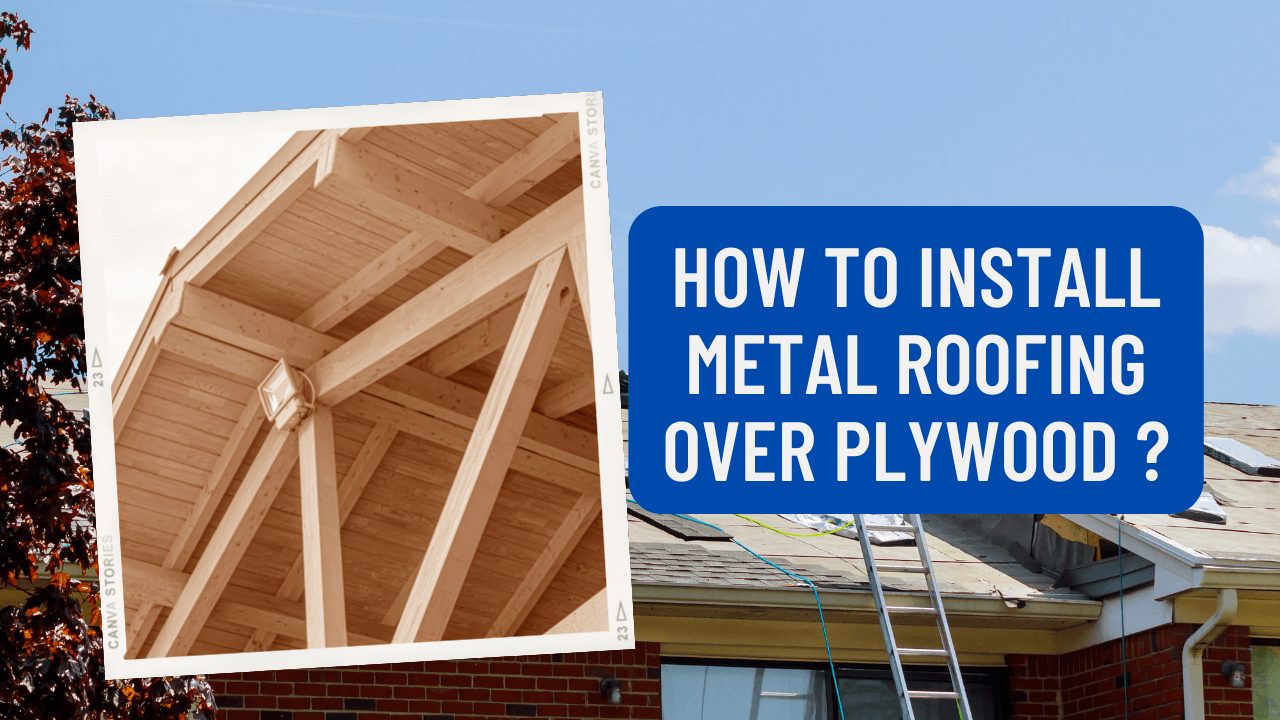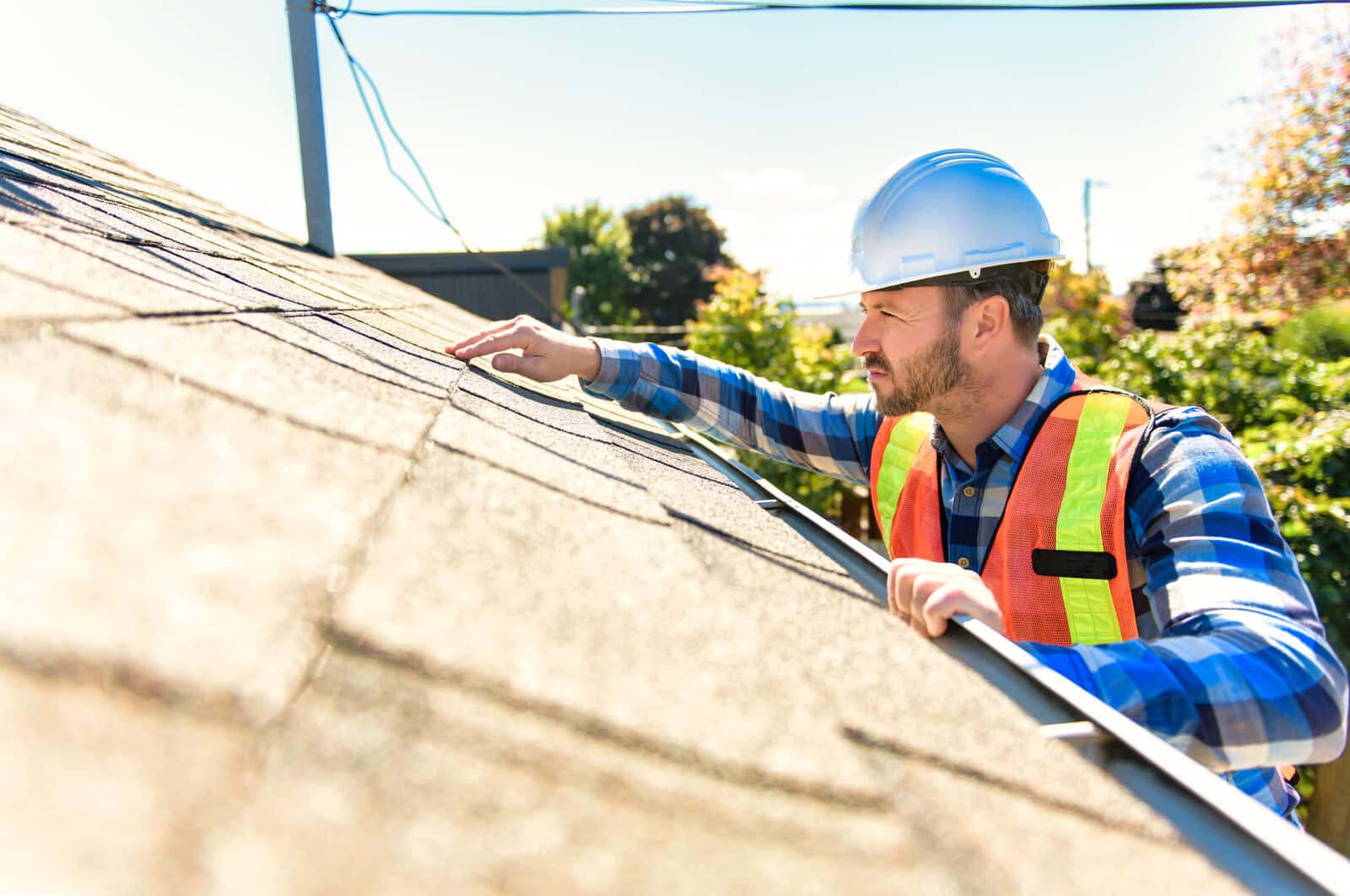If you plan to install a metal roof over an existing structure, make sure you have a solid substructure the support it. A suitable substructure serves as a foundation for attaching the roof’s fasteners and a structural support system. A vital substance will transfer the weight of those loads properly and maintain your roof structurally sound.
No matter its rain, or just the weight of the heavy metal roofing components, a substance is more than enough to offer great support to the plywood.
If you are thinking about installing your metal roof yourself, follow these procedures to ensure it is correctly fastened and the underlying structure is sound.
Table of Contents
Why Don’t You Install Metal Flooring Directly Over The Plywood?
It would be best if you never put the Metal roofing over bare plywood. Roofing shingles or other roofing materials are not essential, but a felt covering over the plywood is essential before metal surface installation. You can also consider adding a slip sheet to protect the felt sheet from metal roofing damage.
Unfortunately, you can considerably increase the chances of the roof leaking if you put your metal roofing directly on plywood without the protective layers. Moreover, you risk premature wood decay since the felt sheet acts as a moisture barrier, keeping the wood dry.
Even if there isn’t much rain, humidity can build up between the metal roof and the plywood, causing the wood to rot.
The slip sheet is another crucial layer. To protect the felt from the metal roofing material, this smooth, place the slip sheet on the top of the metal. The metal can heat up and cling to the tar-infused felt covering due to exposure to the sun. The felt layer might be ripped or worn away when the metal expands and contracts with different temperatures.
A few Considerations To Add Metal Roofing Over Plywood
Although installing metal roofing over plywood is less time-consuming and less expensive than installing shingles, there are still a few measures you need to follow to ensure that your roof does not leak and will last the test of time.
Examine The Existing Plywood Roof
There could be rotted or warped plywood on your roof if it was not recently placed. It would help if you first inspected the timber for peaceful places and warping. After you’ve removed the old roofing, the first thing you’ll want to do is look for any damaged plywood sheathing that needs to replace.
These are huge boards affixed to your roof’s rafters and purlins and serve as structural support, barriers between the roof and the lower components of the substructure, and a surface to which you may adhere your underlayment.
Add The Slip Sheet
A slip sheet and underlayment are essential requirements for most metal roofs. Roofer’s felt, also known as underlayment, is typically made of asphalt, synthetic, or polymer.
This material acts as a barrier between the roofing and the substrate. Moreover, it provides weather protection and directing drainage down the roof’s side. To secure the slip sheet, measure it, roll it out over the plywood, cut it to the roof’s size with a roofing or utility knife, and hammer half-inch roofing nails into place.
Check And Repair The Existing Damages
Replace any damaged plywood sheets if you find wood rot or warping. This can be time-consuming, and you may tempt to cover such places instead. But doing this can drastically reduce the life of your metal roofing. That’s why firstly replace the damaged plywood sheets with new plywood.
Install Felt Barrier
The felt used for the moisture barrier was not the kind you’d find in a craft store. This felt is impregnated with asphalt or tar and comes in thick rolls. It will also aid in maintaining a seal around the screws’ attachment points to the wood.
Install the felt sheets, roll them out and use an industrial staple gun to secure them to the plywood. To make sure the felt fits, cut it using a box knife. Ideally, Humidity and rain will not damage the plywood underneath because of the moisture barrier.
Install The Metal Panels
There are a few considerations before you may put the metal roofing over the covered plywood. Make sure the metal panels are square that the eaves have appropriate adhesion. Additionally, use the correct screws. Consider installing the metal roofing yourself only once you have understood all the points and requirements.
Solid Base Means A long-Lasting Metal Roofing
If you’re putting metal roofing on plywood, it’s even more important to have a stable foundation. You may anticipate your metal-on-plywood roof to last for many years if you make sure the plywood is in good shape and adequately protected before installing the metal roofing.
Conclusion
Metal roofing can install over plywood. But it must be thoroughly inspected to ensure that it is safe to use. If you don’t use felt or a slip sheet to keep to metal to plywood, it won’t survive as long as it should.
To provide complete protection to your home, make sure to follow the essential guidelines and steps to protect the metal roofing for a long-time. However, it’s impossible without proper protection of already installed plywood panels with the help of felt or slips sheets.
So, you have to add the protective sheets and barriers over the plywood bars before adding the metal sheets.





